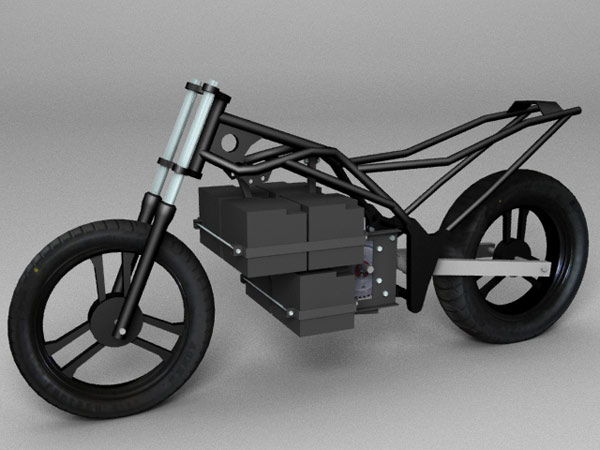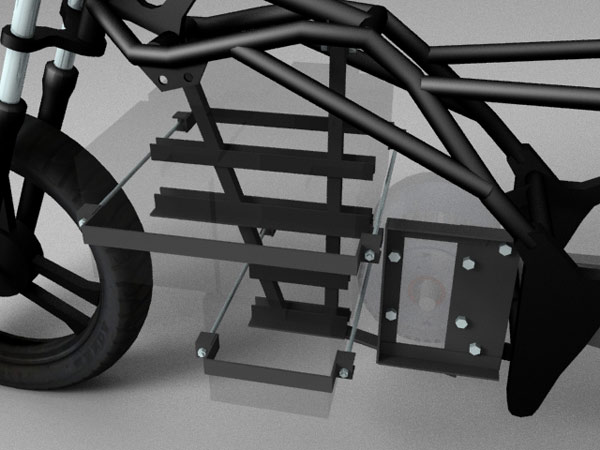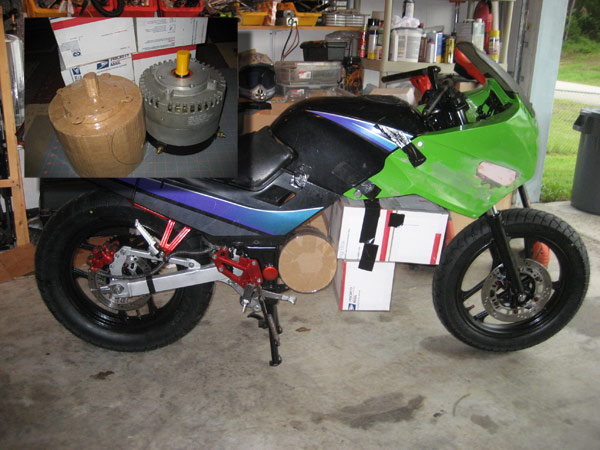Design - Lead

One hundred years ago people were driving electric cars and electric trucks powered by lead acid and nickel iron batteries. As cheap gas became more available and, the invention of the electric starter meant even frail ladies could start a car, gas powered vehicles dominated the market, but lead acid batteries are still in widespread use today. Unfortunately they are heavy, suffer significant voltage drop under heavy loads and can have a relatively short life span compared to many other battery chemistries. Other Ninja 250s had already been converted with lead acid batteries, so this was not uncharted territory. Fortunately, I spent so many months in the conceptualization phase of this project that while the price of lead-acid batteries rose, the price of lithium iron phosphate batteries came down. As a result, several layout and bracket concepts for the Ninja 250 frame ended up merely as mental exercises.
This is how the Sensei probably would have been arranged, had it been built with 50 amp-hour sealed lead-acid batteries.

This early bracket design would have required the addition of some mounting tabs to the frame's center spine. By taking the form of a hanging bracket onto which the batteries are clamped the added weight is less than a full tray mounting system, and allows easy access to the batteries for replacement or testing. Unfortunately with this arrangement, if the bike goes down, the battery's plastic case is the impact point - meaning a destroyed battery and an acid spill.

Design of the mounting hardware progressed in parallel with the build up of the suspension and brakes. With the bike at a rolling chassis state, cardboard mock-ups of both the batteries and the motor allowed for a "sit-on" check to see if everything fit comfortably - no batteries sticking out where a knee or toe should be.
Continue to Lithium Design...
